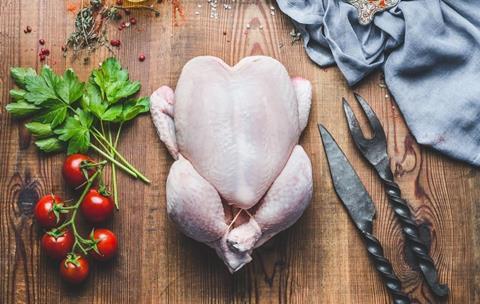Chicken is currently the star of the show in terms of consumer meat purchasing with demand “seemingly untouched”, according to Kantar Worldpanel.
Data for the 12 weeks to 25th February reveals that fresh processed meat and poultry have seen growth. However, chicken leads the category while beef, lamb and pork are all in volume decline.

Kantar Worldpanel had expected to see an uplift for the meat, fish and poultry (MFP) categories over Valentine’s Day and Chinese New Year, but these occasions did not drive growth, with the market appearing to follow a different trend to grocery overall.
Nathan Ward, business unit director for MFP, explained: “The market has slowed in the last four weeks when New Year’s resolutions traditionally start to peter out, and some shoppers have left the market.
“The real driver of decline is in red meats, where beef shows continued volume losses driven by smaller and less frequent trips to the category, with 400,000 fewer purchases of beef this year. The catalyst for this decline is lower-income households and those most affected by inflation.
“Lamb continues to become more expensive and is declining the fastest – purchased 1.4m fewer times this year.”
Ward revealed that chicken appears to be bucking the trend, with falling prices and rising volumes.
He added: “Chicken is growing in fresh and processed markets, with demand seemingly untouched by the concerns of flexitarianism and veganism. We have seen one million more trips containing chicken this year and 195,000 more shoppers, as this versatile meat continues to take a larger share of sales.
“Cuts of chicken legs and breasts are the drivers for this growth, chicken breasts are being supported in store with 18% more promotions, as price cuts (up 18%) and Y for £X deals (up 19%) increase over the period. Chicken legs has seen similar support, with promotional volumes up 10%, helping to stimulate 900,000 more trips this year.”
The figures also reveal that convenience is a growing trend – with ready meal sales jumping 26% and Chinese ready meals in particular rising by more than a quarter.
This story was originally published on a previous version of the Meat Management website and so there may be some missing images and formatting issues.















